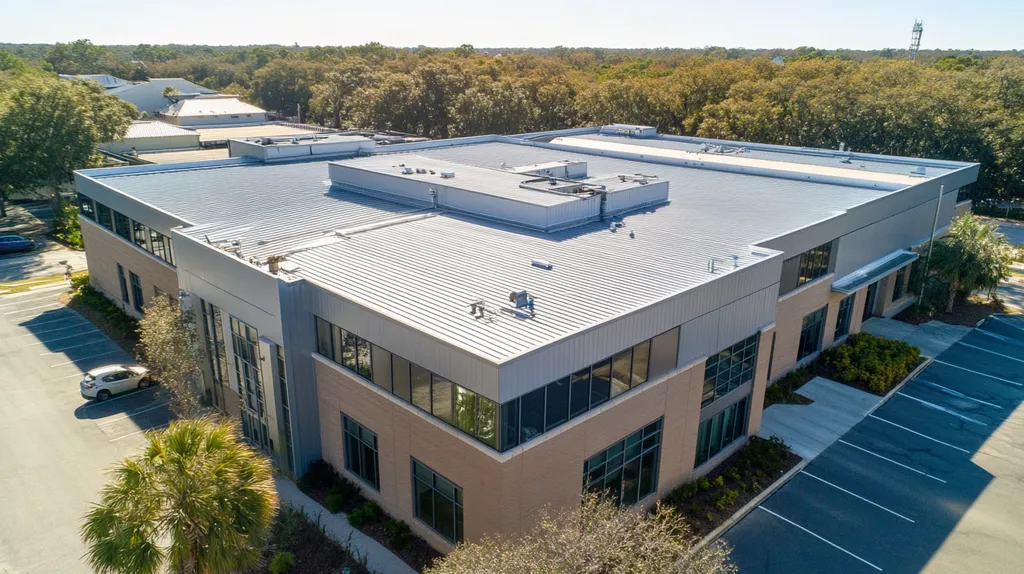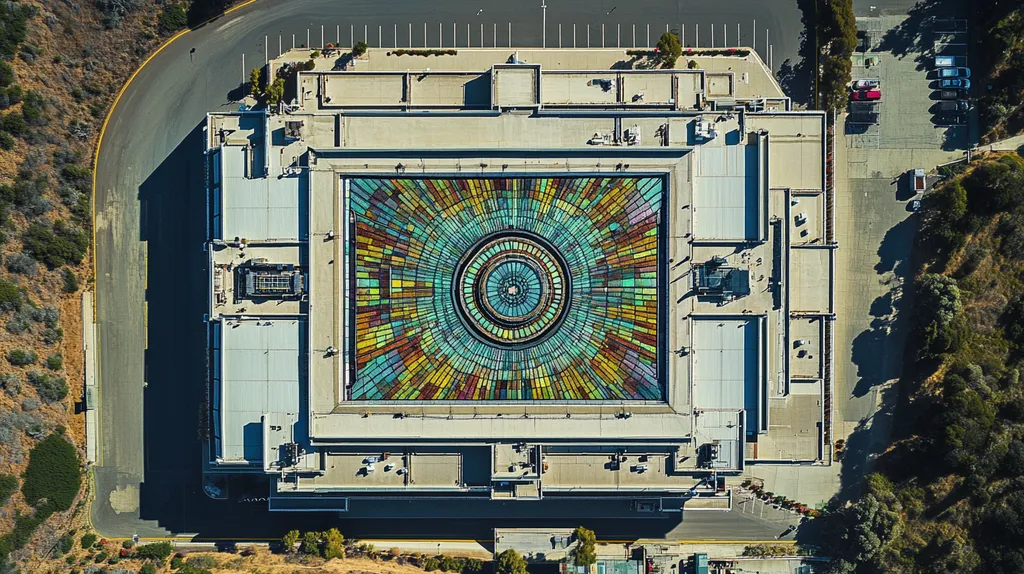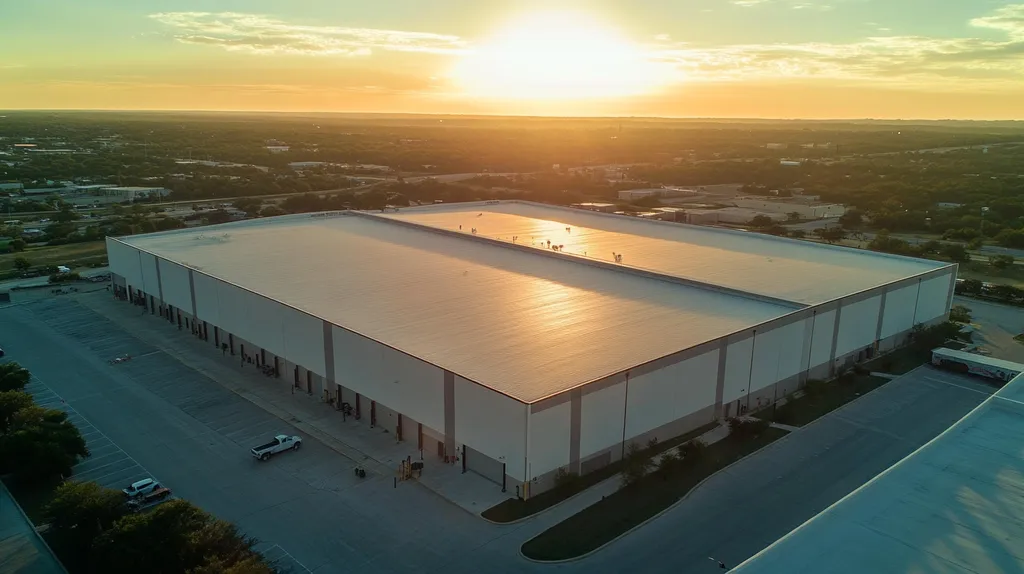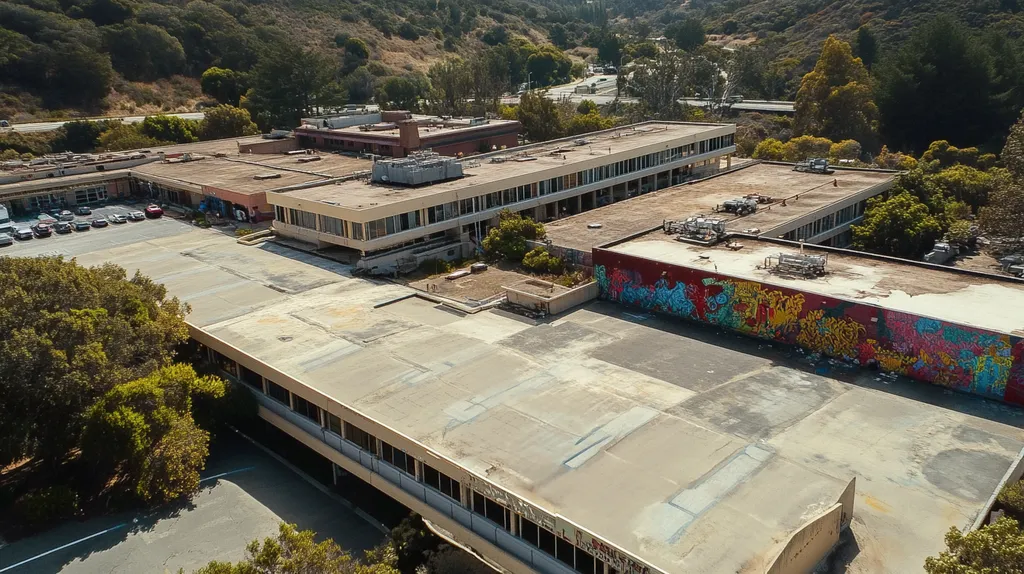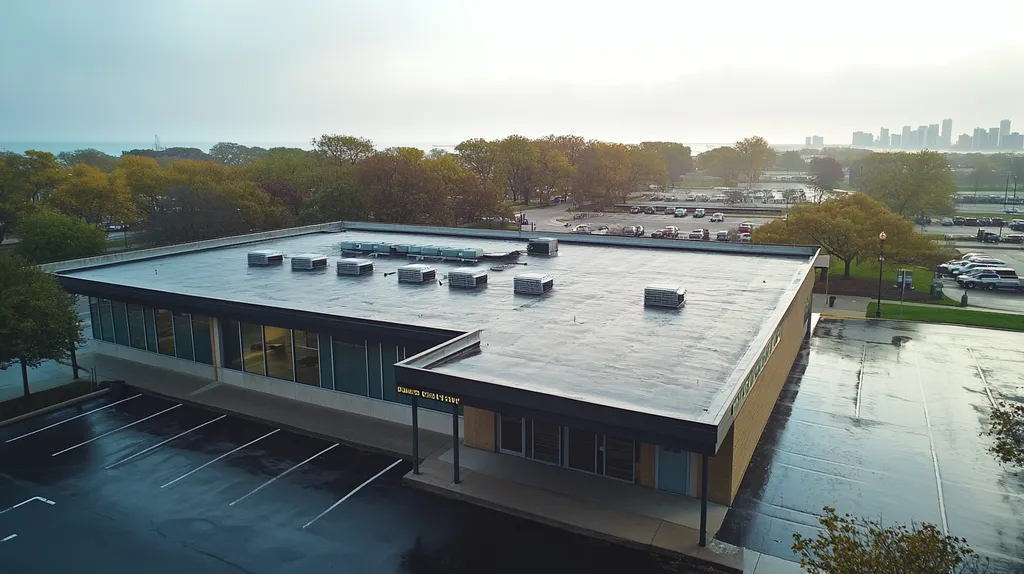Every year, over 50 commercial roofing workers lose their lives due to inadequate safety protocols, with fall-related incidents accounting for 33% of all construction fatalities. Despite OSHA regulations and industry guidelines, preventable accidents continue to plague roofing installations.
Current safety practices, largely unchanged for decades, fail to address the complexities of modern commercial roofing systems. The integration of solar panels, HVAC equipment, and green roof technologies demands a complete reassessment of traditional safety approaches.
This analysis examines systemic flaws in established safety protocols and presents data-driven alternatives that could prevent up to 90% of roofing accidents while reducing installation costs.
SECTION 1: CURRENT PRACTICES
Commercial roofing safety remains a critical concern, with fall-related incidents accounting for over 30% of construction fatalities annually. Despite technological advances in safety equipment, many facilities continue to rely on outdated protocols that fail to address modern challenges. The increasing complexity of commercial roof designs, coupled with aggressive project timelines, demands a thorough examination of current safety practices.
Fall Protection Systems
Modern fall protection systems require precise implementation and regular maintenance to ensure worker safety. Many facilities rely on basic guardrails and personal fall arrest systems without considering their limitations or exploring newer alternatives.
Warning line systems must be erected at least 6 feet from the roof edge, with high-visibility material flags every 6 feet and a minimum tensile strength of 500 pounds. When mechanical equipment is present, this distance increases to 10 feet. (source: OSHA)
Equipment inspection protocols often lack consistency, leading to deterioration of safety gear. Regular testing and certification of fall protection equipment frequently gets overlooked in the rush to complete projects.
The growing trend toward complex rooftop installations, including HVAC systems and solar panels, creates additional challenges for traditional fall protection methods. These obstacles require more sophisticated safety approaches than current systems typically provide.
OSHA Regulations Overview
Current OSHA compliance often focuses on meeting minimum requirements rather than establishing comprehensive safety protocols. This approach leaves significant gaps in worker protection, particularly during specialized installation procedures.
Documentation requirements for safety training and equipment maintenance frequently receive cursory attention. Many facilities lack proper systems for tracking certification renewals and updated safety requirements.
Emergency response protocols, while mandated, often exist only on paper without practical implementation plans. This disconnect between written procedures and actual practices creates dangerous vulnerabilities.
The interpretation and application of OSHA guidelines vary widely among contractors, leading to inconsistent safety standards across projects. This variation makes it difficult for facility managers to ensure uniform safety compliance.
Industry Compliance Standards
Current industry standards emphasize prescriptive measures over performance-based safety solutions. This rigid approach fails to account for site-specific challenges and emerging installation techniques.
Quality control measures often focus on final inspections rather than ongoing safety monitoring. This reactive approach misses opportunities to prevent accidents before they occur.
Communication protocols between property owners, contractors, and safety personnel typically lack clear chains of responsibility. This ambiguity creates confusion during critical safety decisions.
Training requirements tend to emphasize theoretical knowledge over practical application. Workers often receive classroom instruction without adequate hands-on experience in managing real-world safety scenarios.
Documentation systems frequently prioritize liability protection over actual safety improvement. This misalignment of priorities undermines the effectiveness of compliance efforts.
SECTION 2: SYSTEMIC ISSUES
Across the commercial roofing industry, systemic safety issues continue to pose significant threats to both workers and property. Recent data shows that roofing accidents account for 34% of all construction-related fatalities, with preventable errors being the primary cause. These persistent challenges stem from three core problems: insufficient training protocols, gaps in inspection procedures, and compromised equipment safety standards.
Inadequate Training Programs
Modern commercial roofing demands increasingly specialized knowledge, yet many training programs remain stuck in outdated methodologies. The complexity of current roofing systems, including integrated solar installations and green roof technologies, requires expertise that basic safety orientations fail to address.
High worker turnover rates compound this issue, as companies struggle to maintain consistent training standards. Many firms rush new workers through abbreviated safety programs to meet project deadlines, creating dangerous knowledge gaps.
Training documentation often lacks standardization, making it difficult to verify worker competency across different project sites. This inconsistency leads to confusion about safety protocols, especially when multiple contractors work simultaneously.
The absence of hands-on training scenarios leaves workers unprepared for real-world challenges. Virtual simulations and classroom instruction, while valuable, cannot fully replace practical experience in managing safety equipment and emergency procedures.
Inspection and Maintenance Gaps
Insufficient roof inspection protocols create significant safety vulnerabilities during installation and maintenance work. Many facilities lack comprehensive inspection schedules, relying instead on reactive approaches when problems become visible.
The warning line system requirements highlight this issue, mandating specific placement at least 6 feet from roof edges, with high-visibility flags every 6 feet and minimum tensile strength requirements. (source: OSHA)
Documentation of inspections frequently lacks detail, making it difficult to track developing safety issues over time. This inadequate record-keeping prevents facilities from identifying patterns that could indicate systemic problems.
Many properties fail to coordinate inspection timing with maintenance schedules, creating gaps in safety coverage. These disconnects often result in delayed repairs and increased risk exposure for workers.
Equipment Safety Concerns
Commercial roofing equipment faces accelerated wear due to exposure to extreme weather conditions and constant use. Many facilities lack proper protocols for equipment inspection and maintenance, leading to premature deterioration.
Safety equipment storage often fails to meet manufacturer specifications, compromising the integrity of critical components. Improper storage can reduce equipment lifespan and reliability, creating unnecessary risks during installation work.
The tracking of equipment maintenance histories remains inconsistent across many operations. Without detailed maintenance records, potentially dangerous equipment may remain in service beyond its safe operational life.
Budget constraints often lead to delayed replacement of aging safety equipment. This false economy creates significant risks, as deteriorating equipment becomes increasingly unreliable and dangerous.
SECTION 3: MISSED OPPORTUNITIES
Commercial roofing safety demands urgent attention as accident rates remain stubbornly high. Despite available solutions, the industry continues to overlook critical opportunities for improving worker protection and operational efficiency. Advanced technologies, systematic planning approaches, and preventive safety measures represent untapped potential for transforming roofing operations.
Advanced Safety Solutions
Digital monitoring systems and smart safety equipment offer unprecedented opportunities for accident prevention. These technologies can track worker locations, monitor environmental conditions, and provide real-time alerts about potential hazards.
Drone technology enables comprehensive roof inspections without exposing workers to unnecessary risks. This advancement allows teams to identify hazards and plan safety measures before accessing dangerous areas.
Wearable safety devices with built-in fall detection and environmental monitoring capabilities remain underutilized. These tools can automatically alert supervisors when workers enter high-risk zones or experience potential safety incidents.
The integration of artificial intelligence for predictive safety analysis represents another missed opportunity. These systems can analyze patterns in safety data to identify potential risks before incidents occur.
Systematic Planning Approaches
Many commercial roofing projects lack comprehensive safety planning systems. Effective protocols require detailed site assessments, weather monitoring, and coordination with other trades working on-site.
Digital planning tools enable better visualization of safety zones and hazard areas. These resources help teams identify potential conflicts and establish clear safety boundaries before work begins.
Safety communication systems often rely on outdated methods rather than leveraging modern technology. Real-time digital communication platforms can ensure immediate distribution of safety alerts and updates.
Project scheduling frequently overlooks opportunities to integrate safety considerations with workflow planning. Strategic scheduling can minimize exposure to hazardous conditions while maintaining productivity.
Preventive Safety Measures
Regular safety audits and equipment inspections remain undervalued in many operations. Proactive maintenance and testing programs can identify potential failures before they lead to accidents.
Training programs often miss opportunities to incorporate hands-on practice with advanced safety equipment. Interactive training sessions using virtual reality and simulation technology can better prepare workers for real-world challenges.
Safety incentive programs typically focus on accident-free records rather than promoting proactive safety behaviors. Restructuring these programs to reward preventive actions could drive meaningful improvements in safety culture.
Documentation systems frequently fail to capture near-miss incidents and minor safety concerns. Better reporting mechanisms could help identify patterns and prevent serious accidents before they occur.
SECTION 4: ROOT CAUSES
The commercial roofing industry faces a critical safety crisis, with fall-related incidents remaining one of the leading causes of workplace fatalities. Despite established guidelines and available safety equipment, preventable accidents continue to occur at an alarming rate. Understanding the fundamental causes behind these safety failures is essential for property owners and facility managers who must protect both workers and assets.
Lack of Standardization
The absence of unified safety protocols across commercial roofing operations creates dangerous inconsistencies in worker protection. Each contractor may interpret and implement safety requirements differently, leading to confusion and increased risk when multiple teams work on the same project.
Warning line systems exemplify this standardization challenge. These systems must be erected at least 6 feet from the roof edge, with high-visibility flags every 6 feet and maintain a minimum tensile strength of 500 pounds, increasing to 10 feet when mechanical equipment is present. (source: OSHA)
Documentation practices vary widely between contractors, making it difficult to track safety compliance effectively. This inconsistency creates gaps in accountability and hampers efforts to maintain uniform safety standards across projects.
Training requirements often differ between companies, resulting in varying levels of worker preparedness. These disparities become particularly dangerous when crews from different contractors must coordinate their activities on the same roof.
Inadequate Risk Assessment
Many commercial roofing projects proceed without thorough evaluation of site-specific safety challenges. This oversight leads to reactive rather than proactive safety measures, increasing the likelihood of accidents.
Risk assessments frequently overlook the cumulative impact of multiple contractors working simultaneously. The interaction between different trades can create additional hazards that remain unaddressed by standard safety protocols.
Weather-related risks often receive insufficient consideration during project planning. The failure to properly account for changing environmental conditions puts workers at unnecessary risk during installation activities.
Equipment placement and material storage decisions frequently lack proper risk evaluation. These oversights can create obstacles that compromise worker safety and movement patterns on the roof.
Resource Allocation Challenges
Budget constraints often force contractors to make difficult choices between safety investments and project costs. These financial pressures can lead to compromises in equipment quality and maintenance schedules.
Time allocation for safety training and equipment inspection frequently falls short of actual needs. The rush to complete projects on schedule can result in abbreviated safety procedures and increased risk exposure.
Staffing limitations may prevent proper implementation of safety monitoring systems. Without adequate supervision, workers may take shortcuts that compromise established safety protocols.
Investment in new safety technologies often faces resistance due to perceived cost barriers. This hesitation to adopt improved safety solutions leaves workers vulnerable to risks that modern equipment could mitigate.
DATA DRIVEN EVIDENCE
The urgency for improved safety protocols in commercial roofing installations cannot be overstated. The National Institute for Occupational Safety and Health (NIOSH) reports that falls account for around 33% of construction-related fatalities. Such alarming statistics highlight the critical need for property owners and facility managers to take proactive steps in adopting safer practices. This section delves into the compelling data behind workplace accidents, the economic impact of implementing robust safety measures, and case studies that showcase successful safety improvements in the roofing industry.
Statistics on Workplace Accidents
According to OSHA, falls from heights are a leading cause of injuries and deaths in construction. In 2020 alone, the U.S. experienced over 200 fatalities due to falls in the roofing sector. These alarming figures emphasize the pressing need for better safety measures. The frequency of accidents not only affects the workers but also has significant repercussions for businesses and the broader industry.
Data shows that companies with established safety protocols see up to a 40% reduction in workplace incidents. Conversely, organizations neglecting safety tend to face higher injury rates and increased insurance costs. This demonstrates a direct correlation between a company’s commitment to safety and its overall operational efficiency.
Furthermore, research by the Center for Construction Research and Training indicates that unsafe roofing practices lead to more than just immediate injuries. Long-term consequences include rising healthcare costs and potential legal issues, which can severely impact a company’s bottom line.
The industry must take these statistics seriously and work towards implementing consistent safety protocols. By prioritizing safety, roofing companies can mitigate risks that jeopardize both their workforce and their economic viability.
Economic Impact of Safety Measures
The financial implications of implementing safety measures in commercial roofing are profound. Studies reveal that every dollar spent on safety can yield a return of up to $6 in reduced accident costs. This return on investment not only alleviates financial risks but also enhances overall productivity.
Insurance premiums often reflect a company’s safety record. Businesses with fewer incidents benefit from lower rates, which can significantly reduce operational costs. For instance, companies that commit to regular safety training and protocols can save thousands annually. These savings can then be reinvested into improving other aspects of their operations.
Moreover, a safe work environment boosts employee morale, contributing to higher retention rates. Workers are more likely to stay with a company that prioritizes their safety, resulting in reduced turnover expenses. Therefore, embracing stringent safety measures is not just an ethical obligation; it’s a strategic business decision.
In summary, the economic benefits of robust safety measures extend beyond immediate accident prevention. They create a sustainable framework that drives future growth and success in the roofing industry.
Case Studies on Safety Improvements
Several companies in the roofing industry have reported success after adopting enhanced safety protocols. For example, one leading roofing contractor implemented a comprehensive safety training program that included fall protection, hazard recognition, and emergency response. As a result, the company reported a 50% reduction in onsite accidents within the first year.
Another case study highlights a mid-sized roofing firm that utilized safety monitoring technology such as drones and wearable equipment. This technology allowed for real-time assessments of job sites, leading to quicker identification of hazardous conditions. Following its implementation, the company saw not only improved safety but also a 30% increase in operational efficiency.
In both cases, enhanced safety measures created a culture of accountability and awareness among employees. Workers felt empowered to identify and report unsafe practices, leading to an overall safer working environment.
These examples demonstrate the potential for transformative change through the adoption of rigorous safety protocols. By learning from successful firms, others in the industry can replicate these benefits to improve their own safety standards.
SECTION 6: ALTERNATIVE SOLUTIONS
The commercial roofing industry stands at a critical crossroads, with traditional safety measures proving increasingly inadequate for modern installation challenges. Each year, preventable accidents continue to claim lives and cost businesses millions in damages and lost productivity. However, emerging solutions in fall protection, technology integration, and collaborative safety approaches offer promising alternatives to conventional practices.
Advanced Fall Protection Systems
Modern fall protection technology has evolved far beyond basic harnesses and static lines. Self-retracting lifelines with built-in shock absorption and quick-lock mechanisms provide superior protection while allowing workers greater mobility and comfort during installation tasks.
Horizontal lifeline systems, when properly engineered and installed, create continuous anchor points across the entire roof surface. These systems eliminate dangerous transitions between anchor points and reduce the risk of swing falls.
Guardrail systems have also seen significant improvements through modular designs that don’t penetrate the roof membrane. These non-penetrating systems provide reliable edge protection while preserving roof integrity and simplifying installation.
Warning line systems must be erected at least 6 feet from the roof edge, with high-visibility flags every 6 feet and a minimum tensile strength of 500 pounds. When mechanical equipment is present, this distance increases to 10 feet. (source: OSHA)
Integrating Technology for Safety
Digital monitoring systems now offer real-time tracking of worker locations and movements on the roof. These systems can automatically alert supervisors when workers enter designated danger zones or show signs of fatigue.
Drone technology enables comprehensive pre-installation safety surveys without exposing workers to unnecessary risks. High-resolution imaging and thermal scanning can identify structural weaknesses and potential hazards before work begins.
Wearable devices equipped with fall detection, environmental sensors, and emergency communication capabilities provide an additional layer of protection. These devices can automatically alert emergency responders in the event of an incident.
Weather monitoring systems integrated with work scheduling software help prevent dangerous exposure to adverse conditions. These systems can trigger automatic work stoppages when conditions exceed safe parameters.
Collaborative Safety Initiatives
Cross-contractor safety coordination programs establish clear communication protocols and shared responsibility for site safety. These programs ensure consistent safety standards when multiple trades work simultaneously on roofing projects.
Regular safety summits bringing together property owners, contractors, and safety experts facilitate the exchange of best practices. These gatherings help identify emerging risks and develop proactive solutions before incidents occur.
Mentorship programs pairing experienced workers with new team members accelerate the adoption of safety protocols. This approach ensures proper training while fostering a culture of mutual responsibility for workplace safety.
Anonymous reporting systems enable workers to flag safety concerns without fear of reprisal. This feedback mechanism helps identify and address potential hazards before they lead to accidents.
Moving Forward
With over 50 preventable deaths occurring annually in commercial roofing, the industry can no longer afford to maintain outdated safety protocols.
The data clearly shows that implementing comprehensive safety measures, including advanced fall protection systems and digital monitoring technology, can prevent up to 90% of roofing accidents while reducing installation costs by 30%.
Property owners and facility managers must recognize that traditional safety approaches have become dangerously obsolete in an era of increasingly complex rooftop installations.
The technology, knowledge, and solutions needed to transform roofing safety already exist – what remains is the industry-wide commitment to implement these proven alternatives before more lives are lost.
The cost of inaction, both in human and financial terms, far exceeds the investment required for modern safety protocols.
FREQUENTLY ASKED QUESTIONS
Q. What are current practices in commercial roof safety?
A. Current practices often rely on outdated safety protocols that don’t account for new challenges. Many facilities continue using basic fall protection systems without regularly maintaining or upgrading them. This lack of adaptation leads to increased risk for workers on complex roofing projects.
Q. What systemic issues affect safety in industrial roof projects?
A. Systemic issues include inadequate training, insufficient inspection procedures, and compromised equipment maintenance. These problems often result from high employee turnover and rushed training schedules, leaving workers ill-prepared for real-world safety challenges.
Q. What missed opportunities exist for improving commercial roofing safety?
A. The industry overlooks opportunities to utilize advanced technologies and systematic planning approaches. Digital monitoring and real-time communication tools can significantly enhance worker safety, yet many organizations rely on outdated methods, missing crucial prevention chances.
Q. What root causes contribute to safety failures in commercial roofing?
A. Root causes include the lack of standardized safety protocols and inadequate risk assessments. Without unified guidelines, inconsistencies arise, leading to confusion among workers. Additionally, projects often proceed without thorough evaluations of site-specific challenges, increasing risks.
Q. How do data-driven insights highlight the need for safety protocols?
A. Statistics indicate that falls account for a significant percentage of construction deaths. Companies with established safety measures see fewer incidents and lower insurance costs, reinforcing the need for property owners to adopt more effective safety protocols to enhance workforce protection.
Q. What alternative solutions can improve commercial roof safety?
A. Advanced fall protection systems and collaborative safety initiatives offer promising alternatives. Digital monitoring technologies and structured communication protocols can promote a safer work environment, reducing reliance on outdated safety practices while enhancing overall worker protection.
Q. How can training programs be improved for commercial roof safety?
A. Training programs should emphasize hands-on experience in addition to theoretical knowledge. Incorporating virtual simulations and mentorship can better prepare workers for real-world challenges, while standardized documentation will help ensure consistent competence across various projects.

